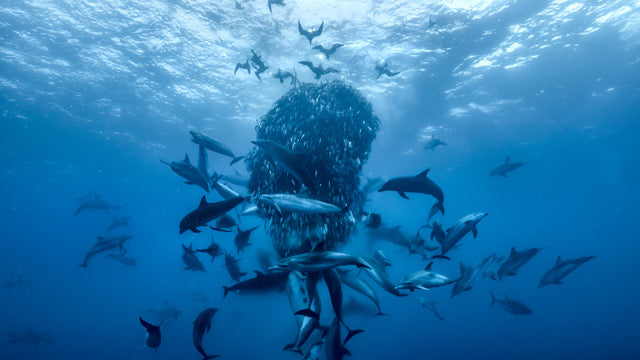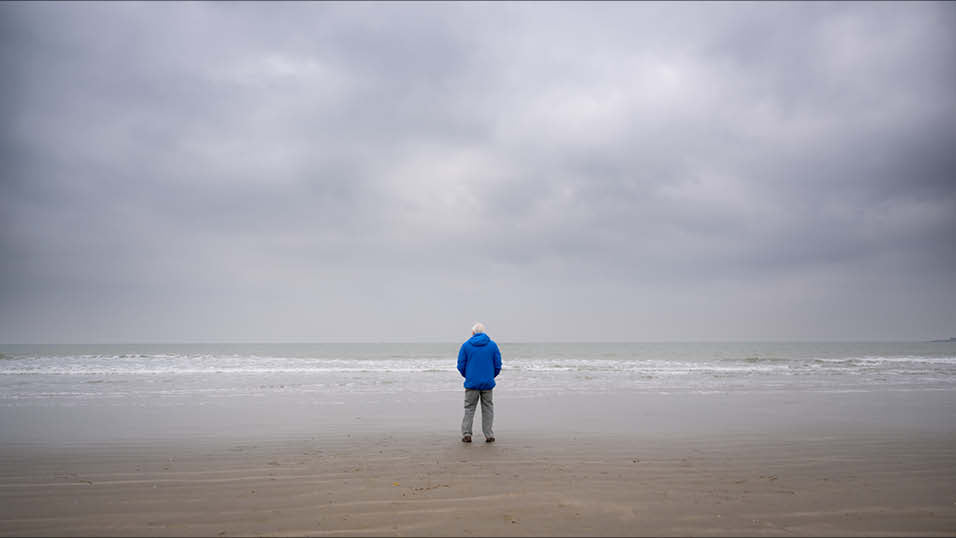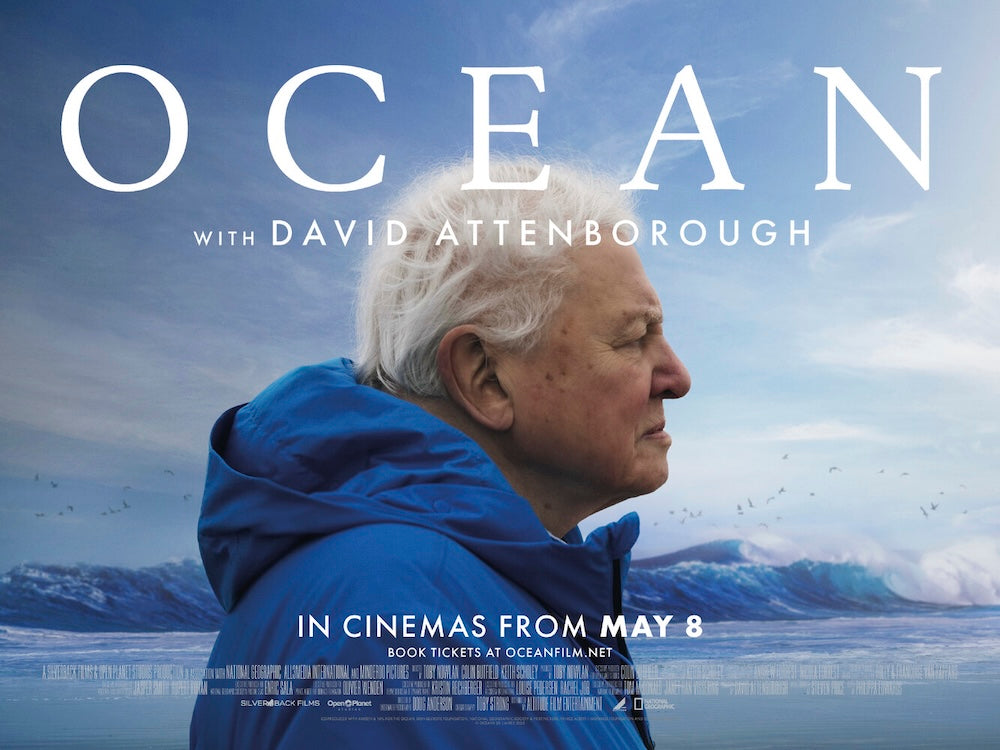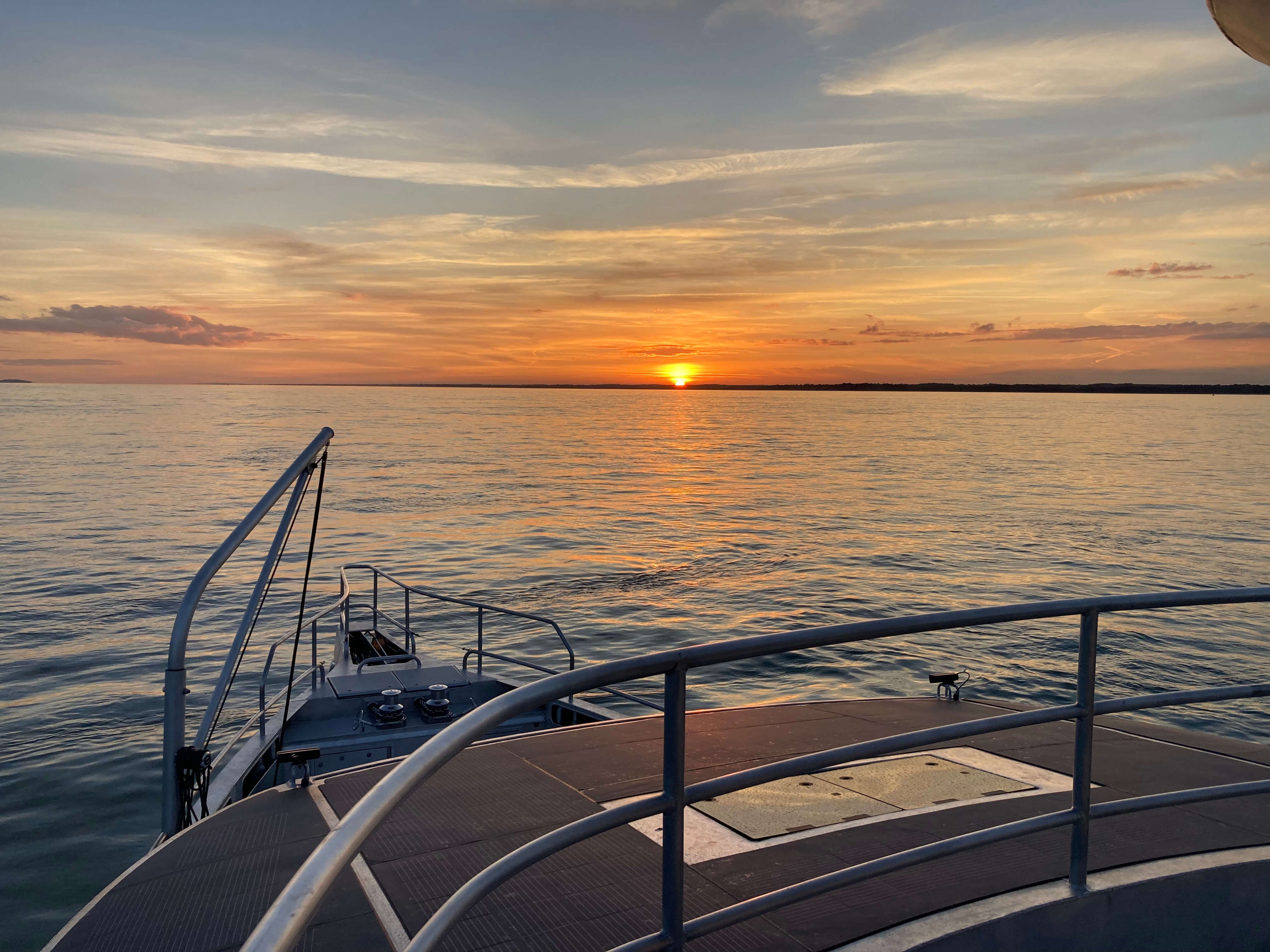Ocean with David Attenborough – Behind the Scenes
The epic new feature-length documentary Ocean with David Attenborough, produced by Silverback Films and Open Planet Studios and co-produced by Arksen & 10% for the Ocean, reveals that nowhere is more vital for our survival than the ocean.
The film features spectacular sequences and a ground-breaking narrative that demonstrates why a healthy ocean is essential for a stable, flourishing planet; exposes the realities of the challenges it currently faces; and highlights inspirational conservation stories that convey Attenborough’s greatest message: that the ocean can recover to a glory beyond anything anyone alive has ever witnessed.
Arksen spoke exclusively to director Colin Butfield about how the film developed and why the storyline will inspire its viewers to think more about the importance of the ocean.

Q: How did the idea of the film come about?
It very much evolved over time. My background was in conservation and I worked at the WWF for many years before eventually ending up in the filmmaking and storytelling world. After working with Silverback Films and David Attenborough on the Netflix series Our Planet, we set up a sister company which has now become Open Planet, specialising in creating impact films and campaigns which included Life on Our Planet, Breaking Boundaries and all the Earth Shot Prize films.
I had been talking with Silverback founder Keith Scholey for some time about how ocean conservation is very underfunded but how it can also have some of the best bounce-backs of any habitat on Earth. Lots of people love shows like Blue Planet, but there is still so much more to share about how the ocean works and what is happening to it. We both felt there was a job that could and should be done to cover that story, a big cinematic piece, set in the human world as much as the natural world.
David has lived for almost a hundred years, filming all over the world, and there was an obvious connection with the ocean discovery, destruction and incredible recovery stories that have occurred during his lifetime. He has a massive passion for the ocean, so we immediately knew he would be an amazing person to tell that story. We approached him very early on in the process and after multiple months and iterations, we all came up with a story and David was happy to author and present it.
Q: How did the film develop?
We started with an overall narrative based on science and events we knew were happening, and we wanted it to be split roughly into thirds. The first third would be about discovery and how, in David's lifetime, our knowledge of how the ocean works has evolved; the second third would reveal the damaging things we are doing to the ocean in a totally new way; and the third would look at the greatest recovery stories around the world, pulling out different examples and ending on an inspirational and positive note.
We wanted to go beyond what we and other people have done before – where you might have five minutes at the end about it – and to actually go to the recovery story, film it and actually show what it looks like now, so that the hope feels genuine. The challenge was that although we were confident there would be plenty of examples to sustain that, we weren't exactly sure what would be the best ones or, importantly, the most filmable ones.
We were deep in research for about 18 months, with a research team in the UK and a whole lot of fixers all around the world. You don't want to be too prescriptive, you want to try and keep your mind open to all sorts of different possibilities that might surprise you, so there was probably around a couple of hundred different scientists and researchers I had conversations with over the phone or by email, so we really went into a lot of depth!
We have a great team and we were able to draw on the best wildlife cinematographers, the best experts in animal behaviour and also the best stories around the world on conservation and people. Often, though, you can find a brilliant example of something but it's thousands of miles from land with impossible weather conditions, so it was also about making sure it was practical. In the end, we did around 45 shoots on every continent and it was about three years from agreeing we were going to do this, to actually finishing the film.
"David has lived for almost a hundred years, filming all over the world, and there was an obvious connection with the ocean discovery, destruction and incredible recovery stories that have occurred during his lifetime."
Colin Butfield
Q: What is it like working with Sir David?
One of the great things about him is that he's been a producer, director, writer, film maker, so he's done all of our jobs before and he’s done them to the highest possible standard. He's very, very at home with a crew and very normal. He didn't become really famous until he was in his fifties, so he’s not got any of those airs and graces that some presenters have. It's a bit of a cliche, but in his case it's true, he really does just get involved as one of the crew.
I first met him around 20 years ago when I worked at the WWF and we saw each other at various events, but the first time we really worked closely together was on Our Planet. We travelled to a number of international events including the World Economic Forum in Davos and the IMF World Bank meetings in Washington, trying to bring nature into the heart of decision making, so we worked really closely together on that.
There's no standing on ceremony around him at all. It's very informal but also professional. In fact, if anything, it's the opposite that is the strange bit – where you suddenly realise the guy you're just having a cheese sandwich with and chatting to about light levels or lines in a script, you suddenly pinch yourself and think ‘oh wait, I used to watch his programs when I as a boy!’ It feels so normal, you forget what an incredibly famous person you are with!
Q: Did he film on location for this project?
Yes, he did, but only in the UK. We didn’t ask him to fly all around the world – but that felt right. In this film, I believe for the first time, when we have stories of different communities and places, it's not David that tells them. He links it all together, but he passes it to the people in those community to tell their stories. So, it felt right that as the Brit on screen, he's on location in the UK, telling his stories from places not that far from his house.

"There is a drone shot of David standing on the beach in Suffolk, just looking out to sea. I really like that in that shot, he’s just like any of us who have ever gazed out to sea."
Colin ButfieldQ: What were the biggest challenges on the film?
The biggest storytelling challenge was trying to make the connection between the human and natural world of the ocean feel relevant to everybody. Blue Planet did an amazing job of making you go ‘wow’ at the incredible nature; other documentaries make you realise we're doing quite a lot of damage to the ocean; but there’s nothing I’ve seen that really connects those two worlds and tells the story of humanity's relationship with the ocean using the same storytelling techniques you'd use on a big natural history show.
Technically, probably the hardest thing was trying to film bottom trawling because it's never been filmed before and we didn't know if it was possible. You have to film the wonder but you also have to film the destruction. Capturing that was absolutely essential and it took a lot of research to find some scientists planning bottom trawling experiments who decided that adding cameras would help their research and also help to share it with the world. That enabled us to get the first proper footage of that, but technologically it was quite hard.
Q: What are your favourite parts of the film?
There are lots of recovery stories that are fascinating but there is a really big one set in the Papahānaumokuākea Marine National Monument, in the north western Hawaiian Islands. It’s roughly 3,000 miles from the nearest continental landmass, so it is an incredibly remote location. I wasn’t on that shoot but I’d read about it so I knew the recovery was well documented and impressive, and when you see those images, they are just amazing.
There's also an incredible Hawaiian chant underneath it that was specially composed for the film by a Hawaiian lady our crew met while they were out there. It's really slow and beautiful and it slows the whole thing right down. It just really connects with that area and the native people and, as a viewer, it's my favourite part. Also, the fact I had very little to do with that sequence and just watched it come together, was really enjoyable!
The other, which I was there for, is a drone shot of David standing on the beach in Suffolk, just looking out to sea. It was a cold day, the sea was quite moody, and it’s one of those scenes you just like to look at. He's sort of ‘everyman’ at that moment. We’ve all stood by the shore, looked out to sea and just watched it and wondered a little bit, and I really like that in that shot, he’s just like any of us who have ever gazed out to sea. It was perfect and when we popped the drone up in the air, we knew straight away we were definitely going to use that shot.

What do you hope the film can achieve?
First of all, I hope it reaches a really big audience and gets them to think about the ocean differently, to get inspired by the ocean and to realise it's relevant to all our lives. That's number one, because everything else flows from that. The biggest problem – and this is actually precisely why Arksen set up 10% for the Ocean – is that most people don't think about the ocean in the same way we think about land. It's kind of obvious why, it's a little bit out of sight out of mind, but in fact the ocean is vitally important and it needs more funding.
The timing, with the United Nations Conference coming up in June, creates a real moment where, hopefully, decision makers will take a different attitude to ocean protection. That is a massive part of this. We have a lot of partners and we’re doing as many screenings as we can, including the UN Conference, other UN events and political and NGO events. Hopefully it will make people realise that ocean conservation is not just for nature, it benefits entire communities.
How important are the partners to this film?
We have some fantastic partners onboard and Arksen and 10% for the Ocean, and Minderoo Pictures, were the two organisations that came on right at the very beginning to actually make this happen, so we’re really grateful for that support. I got introduced to (Arksen founder) Jasper (Smith) a while ago and I really liked him. He’s a really engaging guy, really interested in ocean conservation and exploration, and we just got on really well.
He got the purpose of this film and he really wanted 10% for the Ocean to get involved, so Arksen gave us clothing and he offered up the use of the company’s Explorer Yachts and Discovery Ribs, although the timing didn't actually work out on that. He's also organising various screenings with high-level audiences and people that can hopefully take this message into their own world. He's been part of this the whole way along, involved every step of the way and his personal enthusiasm and passion has been really important.

"We are just showing what happens. It's up to others to make their mind up about where things should or shouldn't happen..."
Colin ButfieldQ: How will the film’s legacy grow?
The film will be shown throughout the world as part of a Global Cinema Event in over 26 countries and it will be available globally on National Geographic, Disney+ and Hulu later this year. When it goes on Disney+ schools and communities will get access to it free of charge, so they can use the film to be able to do community screenings. At Open Planet, we have developed a non-profit platform built around the mission of being able to give everybody the sort of imagery they need to help change the world, so we will also be giving this footage away free to NGOs and educational organisations, so they can use it to tell the story.
Q: How influential do you expect the film to be?
We just want to show the facts. We're not looking for confrontation, but that doesn't mean we might not get some – I’ll find out how confrontational it gets when we release it! What has been really important to us, throughout the whole process, is that we are just showing what happens. It's up to others to make their mind up about where things should or shouldn't happen, but ultimately, if this can be a big film that engages a lot of people, it helps the chance of achieving change.